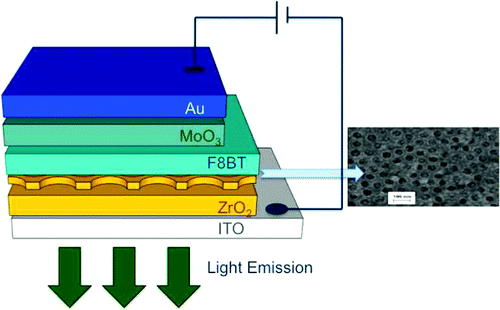The modification of the planar organic/inorganic interface of the hybrid light-emitting diodes by the addition of a tailored nanoporous crystalline metal oxide increases up to 1 order of magnitude the efficiency of the resulting devices. In this Letter, we present the preparation and characterization of the novel controlled 3D interface and discuss how the interaction between the metal oxide and the polymer at the interface results in such an improvement.
